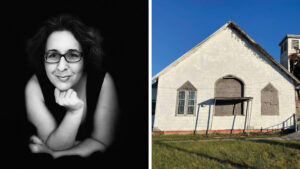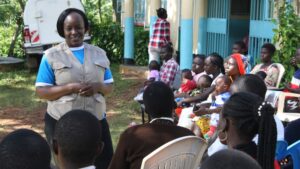For more than 145 years, Baltimore has served as the home of Pimlico Race Course, the nation’s second-oldest racetrack, and the Preakness Stakes, the middle jewel of horseracing’s Triple Crown series.
That beloved local tradition – which every May brings international attention and tens of millions of dollars to Charm City — must be allowed to continue and flourish for many years to come, say supporters of the historic racetrack located in Northwest Baltimore.
“There would be no way to put a bright side on if we lost Pimlico,” says Del. Samuel I. “Sandy” Rosenberg (D-41st), who has long been an advocate for preserving and upgrading Pimlico. If the racecourse closed or the Preakness moved to another venue, “it would be a horrendous loss for the city and for Northwest Baltimore,” he says.
Last fall, a plan was reached between the city and The Stronach Group — which owns Pimlico and Laurel Park racetrack in Laurel, Md. — to keep the Preakness at Pimlico. Part of the proposed deal is a complete redevelopment of Pimlico.
The cost of the Pimlico project is $200 million, inclusive of the cost of infrastructure for the entire Pimlico site, all of which is derived from funds already dedicated by law to the racing industry and the city. Those funds come from a small percentage of casino wagers, which instead of being used for repairs or purses are being redeployed to pay for the construction bonds.
The cost of redeveloping Laurel Park is $175 million, also without the use of any new state funds.
The plan stipulates that The Stronach Group donate the area in and around the Pimlico track, as well as land around nearby Sinai Hospital, to the city for community development and other uses. In addition, the plans calls for the company to build a new clubhouse, and the track would be rotated 30 degrees to the northeast to create tracts of land to be sold for private development.
Pimlico’s grandstand – which had nearly 7,000 dilapidated seats cordoned off before this year’s Preakness – would be demolished, according to the plan, and a new clubhouse/events center would be built. Meanwhile, the proposal calls for training and stable operations to be consolidated at Laurel Park. The purpose of the new facilities will be to host the Preakness Stakes at Pimlico and year-round racing and training at Laurel Park.
The plan – praised by city officials and Park Heights neighborhood activists – is now subject to approval by the Maryland General Assembly during its next session, which begins Jan. 8 and ends Apr. 6.
Alan M. Rifkin is managing partner of Rifkin Weiner Livingston LLC, attorney for the Maryland Jockey Club, owner of the Preakness and Pimlico, and represents them in a wide variety of commercial, regulatory and litigation matters. Rifkin, who is the brother of Jmore Publisher Dr. Scott Rifkin, says it is crucial for the General Assembly to approve the plan, of which he played a major role in developing.

“The Preakness plan has to be approved by the legislature for the authorization of the funding and construction plan,” he says. “That legislation will be introduced at the beginning of the legislative session, discussed and voted upon.
“Our challenge was two-fold: First, the City of Baltimore takes great pride in hosting the Preakness Stakes, one of the premier sporting events in the world,” he says. “But secondly, we have two aging race tracks within 30 miles of each other, each capable of doing the same thing. If we could reimagine the purposes of those tracks and reinvest wisely in them, then perhaps we could preserve the Preakness for the city and enhance the state’s historic racing industry. That was our challenge.
“The Preakness Stakes alone generates $50-$60 million in revenue annually in the Baltimore region, and it offers irreplaceable national and international recognition for the city and the state,” Rifkin says.
Last March, the city sued The Stronach Group to prevent the Ontario-based company from moving the Preakness to Laurel Park, a subject that was discussed publicly for years. But in June, the city withdrew the lawsuit to provide a platform for discussions to take place about the two racetracks by all interested parties.
“That’s when Alan Rifkin called me and asked if I would be willing to participate with him and Bill Cole, the city’s representative, to find a solution to the Pimlico/Preakness problem,” says Alan M. Foreman, a local racing law attorney and CEO of the Maryland Thoroughbred Horsemen’s Association.
Rifkin, a veteran sports attorney, was instrumental in the development of Oriole Park at Camden Yards and other stadium projects. Cole, former president and CEO of the Baltimore Development Corp., was asked by Mayor Bernard C. “Jack” Young to serve as the city’s lead negotiator in the talks.
Over the summer and into the early fall, Rifkin, Foreman and Cole discussed and negotiated the future of Pimlico and Laurel Park, with the assistance of various developers and consultants.
“Our job as negotiators is to present the most feasible, practical and affordable plan for legislative consideration,” Rifkin says. “So in many respects, we have already done our job by presenting that plan which we believe is practical, feasible and affordable.
“We tried to reimagine what the real purposes of these facilities are and could be,” he says. “Then, we reached a conclusion: Pimlico is a major special events facility and doesn’t need to replicate what Laurel Park does. [Laurel Park] is the day-to-day racing circuit for the thoroughbred industry, which is one of the largest economic engines in Maryland.”
Foreman says there were three fundamental components of the discussions: that the Preakness should remain in Baltimore but there would be very limited live racing at Pimlico; that year-round live racing would be consolidated at Laurel Park and needed to be sustainable for the state’s racing and breeding industry; and there could not be any state funding for the project.
The plan was for Pimlico to become an events park hosting the Preakness annually. For the other months of the year, Pimlico would be available to the surrounding communities for retail and commercial development, communal events, sports programming and other activities. Meanwhile, Laurel Park would host year-round horseracing.
Rifkin says the plan will ensure that Pimlico’s neighboring communities of Park Heights, Belvedere and Mount Washington, as well as Sinai Hospital, benefit from the racetrack’s presence.
“Until now, Pimlico has been a barrier between these neighborhoods,” he says. “The new Pimlico would become a bridge between them. … The racetrack separates life expectancies by decades. North and west of the racetrack, life expectancy is some 80 years of age. But in the Park Heights and Belvedere communities, life expectancy is in the low 60s. The change from barrier to bridge could make a difference.”
The hope is that providing shared public spaces from the Pimlico deal could also improve communication and relations between the different neighboring communities.
“I’m particularly excited for the Park Heights community as this project will accelerate the redevelopment of that important neighborhood by at least a decade and generate hundreds of millions in new private investment,” says Cole.
Rosenberg believes the deal, if passed by the General Assembly, will greatly enhance the area at large.
“For the Jewish community, a major neighborhood asset [Pimlico] will remain as an ongoing operation,” he says. “And there will be countless benefits to the Park Heights and Pimlico neighborhoods. These include jobs, renovated schools and attracting new investors. … Sinai Hospital is already committed to redeveloping the parking lot into an outpatient treatment facility. And there is also interest from a hotel and a grocery store, as well as the possibility of sports-betting at the renovated Pimlico, and a restaurant. Pimlico would be an attraction for the region, so people would chose to come here beyond Preakness Week.”
Rifkin says he is cautiously optimistic that the plan will be approved during the 2020 legislative session. “The fundamental recognition so far has been that this is the best plan at the right time to solve a very complex problem that has been challenging for decades,” he says. “I don’t know that there’s another time or a better plan. I would hope everyone realizes this is the time and this is the plan.”
Rifkin says the plan was conceived and realized due to the hard work, dedication and vision of many individuals and groups.
“We are grateful to The Stronach Group and the Maryland Jockey Club, which agreed to donate land for the outlying facilities and the racetrack proper to the City of Baltimore,” he says. “Also, Del. Sandy Rosenberg, Senate President Bill Ferguson and Del. Shelly Hettleman [D-11th], among many others, never gave up hope for a new Pimlico with many benefits for Baltimore and for Maryland. In addition, the racing industry’s track, horsemen and breeders agreed to dedicate a portion of their existing funding to pay for the project for 30 years.”
Rifkin calls the Pimlico/Laurel Park plan “historic. Big plans call for big vision. These transformational plans are of great value for Pimlico, Laurel Park, Park Heights and other surrounding communities, for Baltimore and for the State of Maryland.”
Peter Arnold is a Silver Spring-based freelance writer.





